# The Tribes of the Semantic Web
The Tribes of the Semantic Web
There are actually tribes within the Semantic Web:
These include:
- The Linked Data Purist
- The Semantic Annotator
- The Semantics Purist
- The Semantic Insider
Generally this is because they prefer a certain architecture over another, but I am not saying that each is exclusive. There are people in the community which straddle two or more of the tribes.
The Linked Data Purist
The Linked Data Purist will have links out to various open data objects, and will provide content negotiation in a Human-Friendly format (e.g. HTML) and in a Linked Data format (e.g. RDF). Languages like SPARQL and SPARUL would be provided to query and update the Internal Data Graph Model.
The Linked Data Purists Architecture
The Document Web Developer and the Linked Data Developer
Its possible to add a layer on top of the SQL based Relational Database, to create “RDF Views”. This allows the developer to play with the data in either SQL or SPARQL formats:
Linked Data WITH Document Web Architecture
The Semantic Annotator
The Semantic Annotator will use an annotation language to embed semantics into the document they are providing (whether thats XML, XHTML or HTML). Frameworks such as RDFa, Microformats, eRDF and AB Meta are used in this case:
The Semantic Annotator Architecture
The Semantic Insider
A Semantic Insider will have closed data due to privacy or licensing, they only provide an interface on the data with little or no links out, and certainly no links coming in directly to objects. The only real reason for hiding data like this is because of privacy or licensing, if privacy or licensing are not an issue then opening up the data is promoted by the Linked Data tribe.
The Semantic Inside Architecture
The Semantics Purist
The Semantics Purist enjoys getting the real semantics working for each and every object. They will use OWL extensively, and will understand Descriptions Logic. The Semantics Purist does this in order to use the many semantic inferencing tools available.
(No diagram for this one, because it varies… some aren’t web based, some are…. most use some kind of deep inferencing)
Tribes are bad, Linking is key
Tribes are bad, they split communities up when they could really do with being together and more universal… we would probably get a lot more done if we did what we were promoting not just for data but for intercommunication. Linking Data is important, yes, but Linking together between the existing tribes is even better. This is a call to those in the Semantic Web / semantic web community.
Bishop John Shelby Spong (a well known Liberal Episcopalian Christian Bishop) often talks about the Tribal Identity/Mentality of Christians through the ages. This can happen within the Web Development/Design world too, it happens to/from the Semantic Web community (e.g. some people see the Semantic Web as “too academic”, which is rubbish because most of it isn’t) and also within it (e.g. Microformats versus RDF or RDFa).
“It is a magnificent feeling to recognize the unity of complex phenomena which appear to be things quite apart from the direct visible truth” - Albert Einstein
“Where there is unity there is always victory” - Publilius Syrus
So I leave you with a picture of “Minerva of Peace” by Elihu Vedder:
Minerva of Peace by Elihu Vedder. (From Wikipedia “Minerva of Peace“)
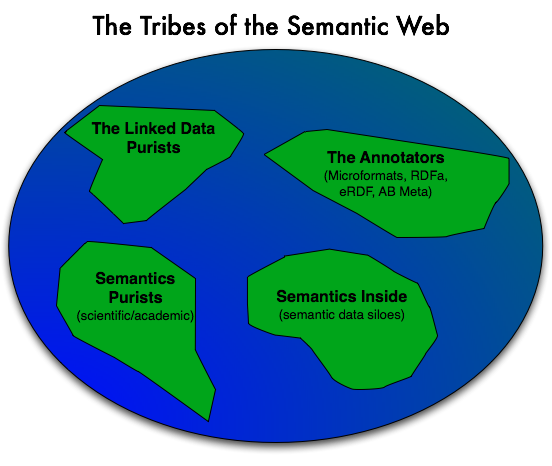
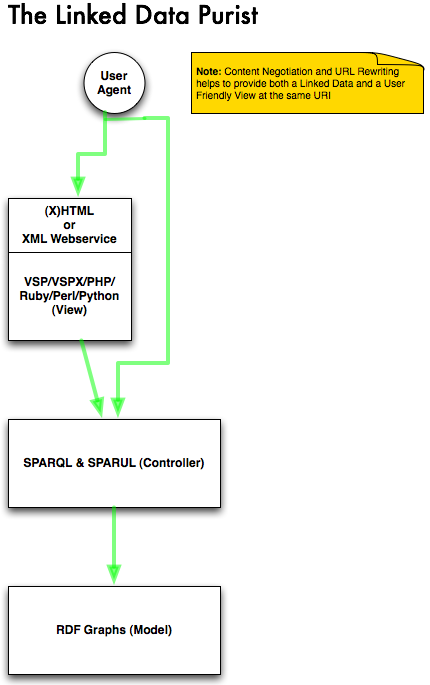
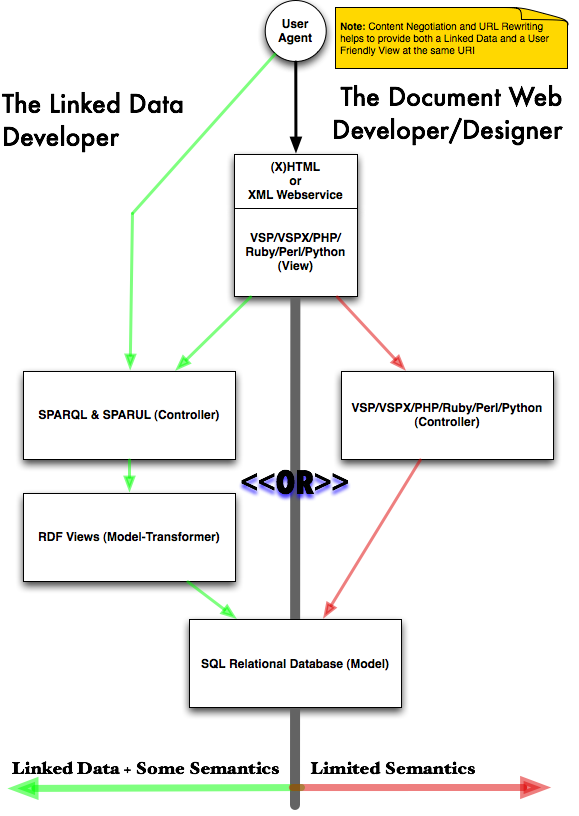
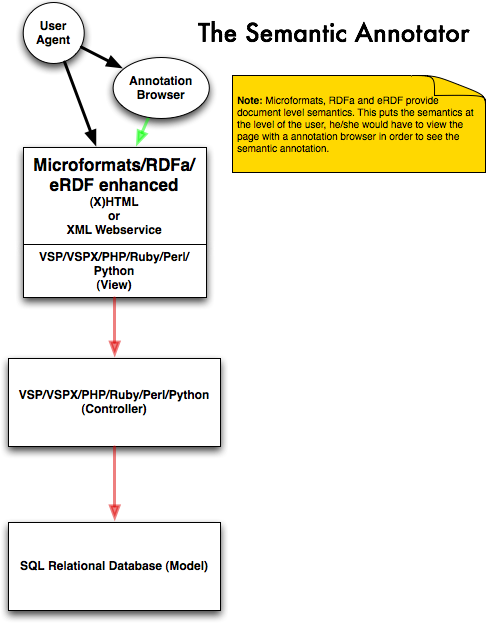
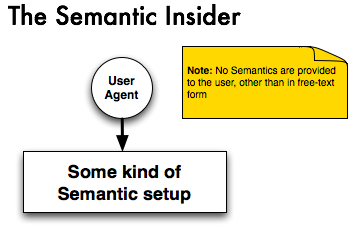



May 23rd, 2008 at 7:36 pm
Thanks to you, now I know that I belong to the Semantic Annotator Tribe. Makes me feel welcome… when do I get my welcome basket?
=jtrentadams
May 23rd, 2008 at 7:43 pm
Welcome

err…. you can have a free spear of asparagus.
No, more seriously. Everything that you do annotate can be sponged into pure RDF triples anyway, and viewed on a Semantic Web browser. So its all good
May 23rd, 2008 at 10:08 pm
Daniel,
Insatiable pursuit of “Context” is the connector across the Tribes (imho).
Annotators provide a strucutured data substrate that is easy to RDFize. The “Reasoning & Inferencing” folk (your Knowledge oriented purists) will find a “Context” oriented Linked Data substrate very attractive (think: UMBEL and similar efforts). The “Semantics Inside” folks will respond to opportunity costs (VCs don’t like losing money)
May 25th, 2008 at 8:43 am
[...] am on May 25, 2008 | # | Daniel Lewis talks about The Tribes of the Semantic Web [...]
May 28th, 2008 at 5:01 pm
[...] my previous post on “The Tribes of the Semantic Web“. There is another Semantic Tribe: The RDFization [...]
June 16th, 2008 at 5:18 am
[...] The Tribes of the Semantic Web [via Zemanta] [...]